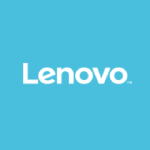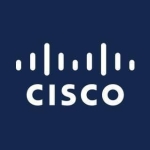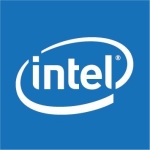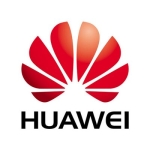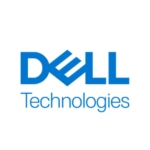What is our primary use case?
We are primarily using it for test development environments. We have VMs hosted on them, and we use them to run our internal applications, customer environments, dev setup, common projects, the development environment, and the UAT environment in the service.
Dell PowerEdge Rack Servers are pretty good at handling diverse applications. We get good performance from it.
How has it helped my organization?
We have a lot of VMs on Dell PowerEdge Rack Servers. On a single server, we have probably hosted 14 or 15 VMs. Out of these, 8 to 10 are continuously running, and four of them are backup VMs, so it can handle a good workload.
For cybersecurity, it is only accessible on the intranet; it is not accessible through the web. We use it for local development purposes, and it is behind our firewall. Its security is strong. We handle a lot of test data for government and confidential customers. It is safe and strong locally. We have not experienced any security issues.
Dell PowerEdge Rack Servers have helped to reduce unplanned production downtime if we need to replace a hard disk, instead of completely shutting a server, there is a hot swap feature. It is quite good in that aspect. Usually, for any activity, there is a downtime of about 30 minutes. It has saved a lot of time.
We have tried AI workloads for a development environment for a government customer in Singapore. The servers are hosted in Singapore. It is an ML-based engine with AI. It is a government project where data is processed, and we run it on Dell PowerEdge Rack Servers. The benefit of running AI workloads on PowerEdge Servers is that it is easy to allocate memory. The application we are running is memory intensive. It is pretty easy to scale memory and storage.
What is most valuable?
We have been using these servers for eight years. We have experienced good performance with them.
Dell PowerEdge's strength is that they have a lot of NIC cards, so we can set up web apps and everything else for development on a single server. We can easily replace hard disks which is quite good.
What needs improvement?
I have used these servers in a government project along with Nutanix, and there is a security restriction. I do not know if it is from Dell's side or Nutanix's side. From the host, you cannot read the external hard drive data inside a VM. They have a security restriction on it. I understand the security restriction, but there should be a policy where you can do it during the development stages and copy data. After it goes to production, the policy should be implemented, and the port should be closed.
For how long have I used the solution?
I have been using Dell PowerEdge Rack Servers for seven to eight years.
What do I think about the stability of the solution?
I have not experienced any stability issues. The number of years we have been using these servers shows their reliability.
What do I think about the scalability of the solution?
For a government project, I went from five nodes to eight nodes, and it was pretty easy to scale up.
How are customer service and support?
We did not directly go to Dell support because we were going through Nutanix. From what I have heard, I would rate Dell support an eight out of ten.
How would you rate customer service and support?
How was the initial setup?
The setup is easy. Management-wise also, it is pretty easy. We normally remote in from our lab. It is convenient and easy.
We partnered with Nutanix for this government project. They set up the base hardware infrastructure configurations. We built our VM applications on top of that. We had a couple of challenges. Data migration was a big challenge because of the sensitivity of the data. I had to sit inside the data center for twelve hours continuously because we had to take a different approach to transferring data. We could not directly transfer that data from the physical port into a VM. They told us that it was a security restriction that could not be relaxed at all. There should be an option when you migrate large data sets.
What was our ROI?
I cannot put a number to ROI because it is more of a development environment set up for us, not a production environment. The production environment using Dell PowerEdge Rack Servers is managed by the government entity itself. We are an application service provider and system integrator. We integrate our custom-built applications or COTS applications into the government infrastructure. Cost-wise, for the physical hardware, we cannot give an estimate because the data we use for development is small in the test environment.
From the fulfillment aspect, the government has a big set of data centers. Most of them have Dell EMC servers. We use the similar, if not the same, hardware to do our development tasks.
Which other solutions did I evaluate?
We evaluated a Lenovo IBM server seven or eight years ago. We chose Dell PowerEdge because of the storage aspect. We got a better storage and RAM option here, so we moved to Dell.
What other advice do I have?
In terms of our AI journey, we are an IT system integrator. We have built our own IoT platform. We have integrated AI into our IoT platform, and we also have partnered with another PC manufacturer for whom we have been testing hardware devices for the past 20 years or so. We have qualified their AI solutions on their devices.
Everything has a cost, but we have to see the benefits over a longer period of time and its effect on our operations and ultimately customer satisfaction. I do not look at the cost only from a financial perspective; I have to look at it from different angles. This helps ensure that it does not create problems for our customers and that the customer is satisfied.
I would recommend focusing on performance and reliability rather than just cost.
I would rate Dell PowerEdge Rack Servers very high because we have been able to set up different environments in different VLANs and connect to all of them at the same time. Overall, I would rate Dell PowerEdge Rack Servers an eight out of ten.
Which deployment model are you using for this solution?
On-premises
Disclosure: My company has a business relationship with this vendor other than being a customer. Reseller






